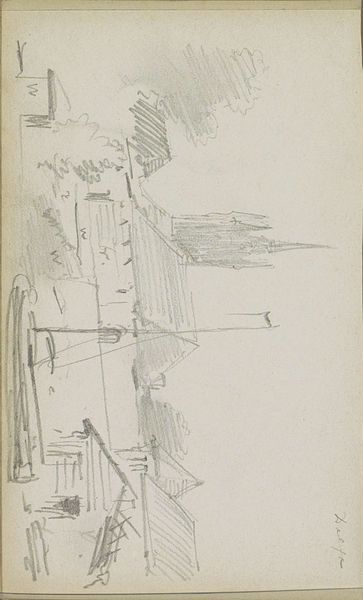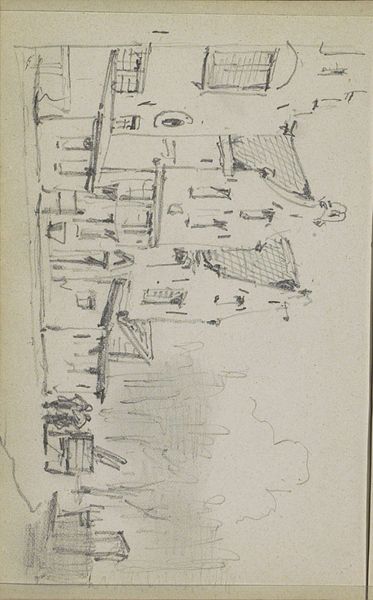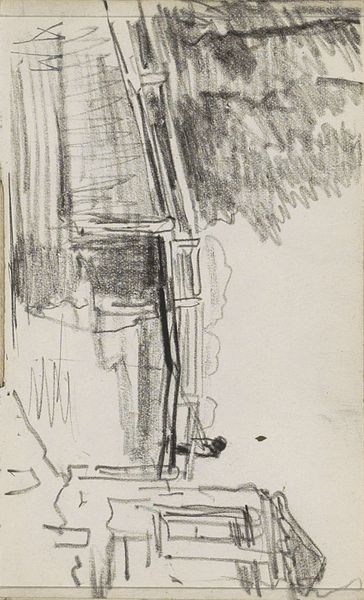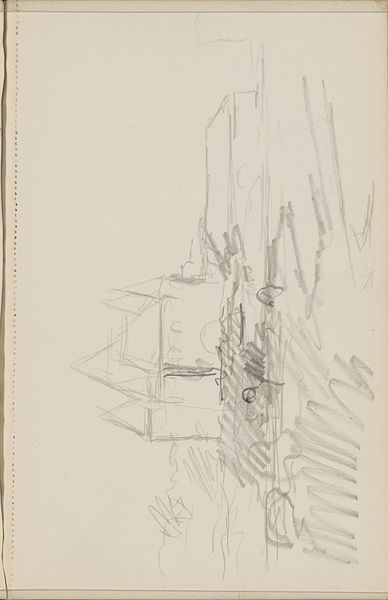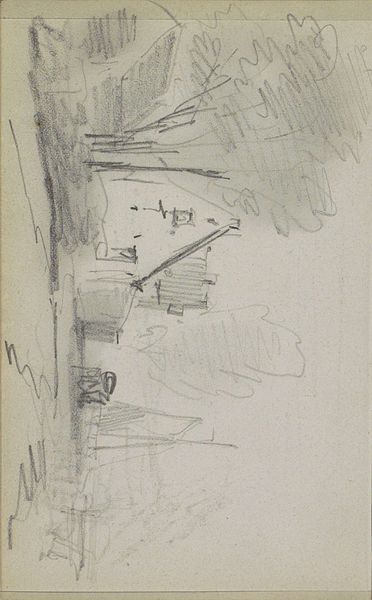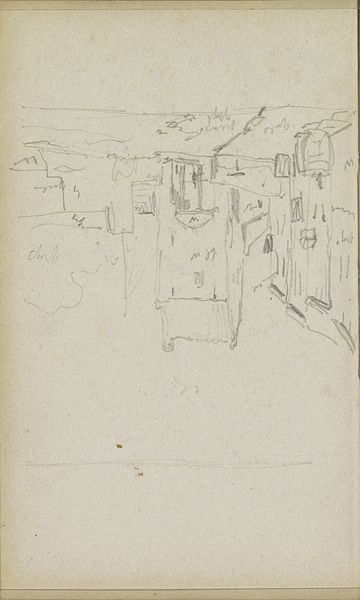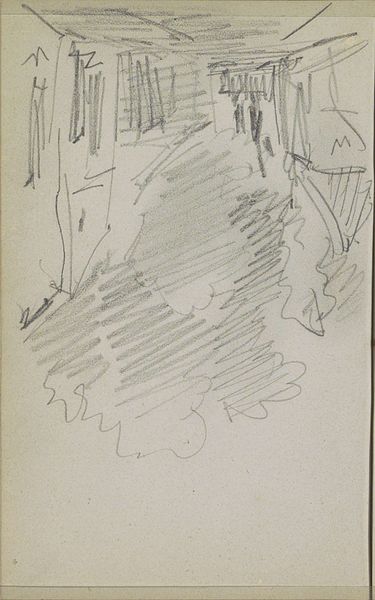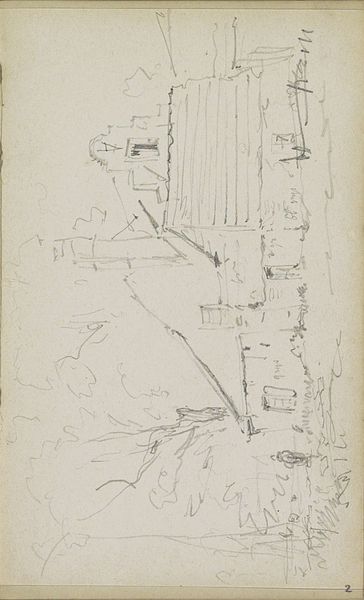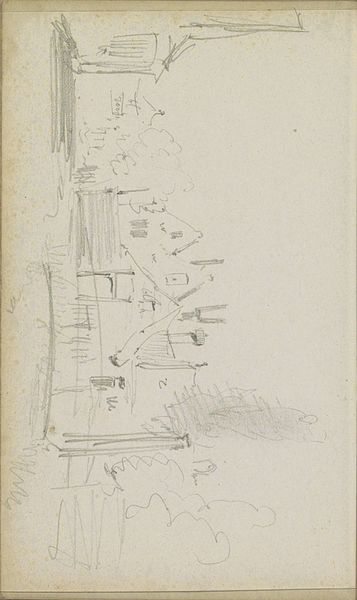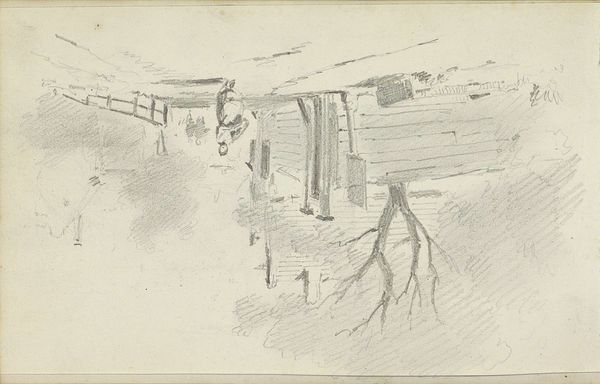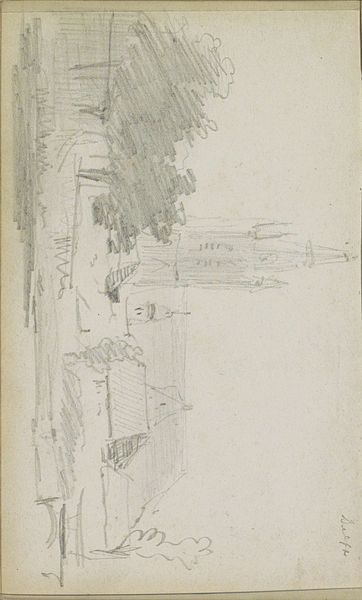
drawing, paper, pencil
#
drawing
#
sketch book
#
landscape
#
paper
#
pencil
#
academic-art
#
realism
Copyright: Rijks Museum: Open Domain
Curator: Here we have a work titled "Gezicht op een kerkplein," which roughly translates to "View of a Church Square." It is attributed to Adrianus Eversen and believed to have been created sometime between 1828 and 1897. It’s a pencil drawing on paper. Editor: It feels quite fleeting, almost like a quickly jotted note, rather than a finished piece. The lines are so faint, suggesting it’s a preliminary sketch. Curator: Indeed. It likely served as a study for a larger, more formal painting. Eversen, who was known for his cityscapes, often created these sketches to capture the light and architectural details. These sketches were, in turn, an essential element for Dutch Realist painting and representation of a cultural identity of the 19th Century. Editor: Considering its probable function, it is really compelling how raw the medium and the image come across, and how the image conveys texture rather than clear definition. You can almost feel the pressure of the pencil on the page. The visible strokes seem deliberately placed for texture, rather than clear representation. Curator: Precisely, the medium—pencil on paper—was a readily available, and inexpensive one. These kinds of sketches reflect artistic training during the 19th Century as much as being documents of an artist's creative process. Such works are valuable because they offer insights into the daily routines, aesthetic values and visual culture of their time. Editor: It’s fascinating to consider the social context too. Pencils were not a uniform product at that time, so you see gradations even in how graphite shows on this paper. Did the availability of materials shape Eversen’s approach or the way he conceived urban space? Curator: That is a thought-provoking question. Moreover, the scale of public spaces depicted in art contributes to national identity and ideas of nationhood during a period of increased social change. Editor: Thinking about it from a material perspective helps bring some new layers into focus in this apparently simple work. Thanks. Curator: And for me as well; looking closer at this artwork reminded me that even quick sketches contribute to our knowledge of an artist’s time, its socio-economic conditions, and its material culture.
Comments
No comments
Be the first to comment and join the conversation on the ultimate creative platform.

